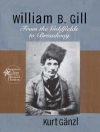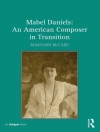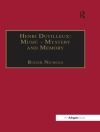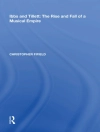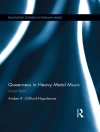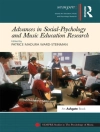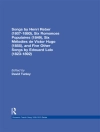This huge exploration of faith, tolerance, hatred, extermination, love, loyalty, self-sacrifice and hope in despair, is the first panel of a central diptych on the Reformation, and the heart of the wider tetralogy of Meyerbeer’s grand operas, where issues of power, religion and love are examined in a variety of modes.For five years after the sensational premiere of Robert le Diable, Meyerbeer was thought to be resting on his laurels. Instead, he was drudging over a gigantic drama, partly adapted by Scribe from Merimee’s Chronique de Charles IX. It was hardly believed possible that the esrlier success could be repeated. Most of the vivid details gleaned from every available document related to the time, were the composer’s contribution to Les Huguenots. The music for this sombre tapestry of the Saint Bartholomew Massacre springs from the core of the vivid action and creates a panoramic alternation of moods, that capture the tragedy of religious intolerance and personal anguish in one of the most fraught events in history when some 30, 000 French Protestants were murdered during the night of 24 August 1574. Meyerbeer’s music rises to occasion, and reaches sublime heights of music drama, especially in the fourth and fifth acts, with the Benediction of the Catholic Daggers-one of the most electrical scenes in all opera-the more powerful Love Duet, and the trio of martyrdom in the last moments of the opera. Spectacle was incorporated in the plot, in Meyerbeer’s concern to conjure up the couleur locale of those heroic times. The evocation of Marguerite de Valois’s court at Chenonceaux, the recreation of late Medieval Parisian life with its Gypsy revels and the religionists’ riots in the Pre-aux-Clercs, the wedding fete in the Hotel de Nesle, all grow out of the central idea. Meyerbeer was also very successful in his characterizations of individuals: the dreamy idealist Raoul, the passionate and self-sacrificing Valentine, the fanatical and implacable St Bris, the rough stolid Marcel, the elegant and capricious queen, the somewhat flamboyant but always honorable Nevers. All come to life in this score.The opera became enormously popular, its various arias a touchstone of operatic lyricism, and by 1936 had been performed 1120 times in at the Paris Opera alone. In spite of its overwhelming dramatic power and instrumental riches of the score, the most significant aspect of the work came to regarded the supremacy of the vocal parts. Performances at the Metropolitan Opera in new York during the 1890s were among the the most famous in operatic history. Here performances attained a legendary status, the so-called nuits des sept etoiles ("the Nights of the Seven Stars"), as in 1894 with Nellie Melba, Lillian Nordica, Sofia Scalchi, Jean de Reszke, Edouard de Reszke, Pol Plancon, and Victor Maurel Once again George Sand summed up with incomparable insight the essence of Meyerbeer’s musico-dramatic achievement. "From stone floors that no Protestant knee ever warms, solemn voices seemed to resound, the tones of a calm, secure triumph and the expiring sighs and murmurings of a tranquil end, resigned, confident, without death-rattle or lamentation. It was the voice of Calvinist martyrdom, a martyrdom without ecstasy or delirium, a torment where suffering is stifled by austere pride and august certainty… These imaginary hymns naturally assumed in my mind the form of that fine canticle in your opera, The Huguenots; and, while I dreamt I heard the cries of Catholic indignation and a sharp volley of musketry outside, a tall figure passed before my eyes, one of the noblest dramatic figures, one of the loveliest personifications of the idea of faith that art has ever produced in our time: Meyerbeer’s Marcel. And I saw that bronze statue standing clothed in buffalo hide, quickened by the divine fire the composer had brought down upon him. I saw him, Maestro, forgive me my presumption, just as he must have appeared to you when you sought him at the uncompromising and steadfast hour of noon under the glowing arches of some Protestant church, vast and luminous as this one. Though you are a musician, you are more a poet than any of us! In what secret recess of your soul, in what hidden treasury of your mind did you find those clear, pure features, that concept, simple as antiquity, true as history, lucid as conscience, strong as faith? …."The facsimile edition of the manuscript of this famous work, for so long kept private and then thought lost after the Second World War, enables lovers of opera to examine for themselves the compositional procedure of its great and often misunderstood creator. One can see the extent to which curtailment of the original conception was needed on the eve of the premiere: in the ensembles of both act 1 and 3 Meyerbeer’s complex developments had to be reduced. The ever present problem of censorship also meant that the original idea of depicting Catherine de’ Medici on stage as the instigator of the massacre had to be radically altered and her role substituted by the Comte de Saint Bris. The famous viola d’amore accompaniment to Raoul’s rhapsodic act 1 romance ("Plus blanche que la blanche hermine") was originally conceived for the cello. The extraordinary Andante amoroso for the central part of the love duet also indicates Meyerbeer’s preparedness to act on a good idea: in this case Adolphe Nourrit’s suggestion that the cantabile be expanded. To see the MS of such a famous opera is both a moving and stimulating experience.
Robert Ignatius Letellier
Les Huguenots [PDF ebook]
The Manuscript Facsimiles
Les Huguenots [PDF ebook]
The Manuscript Facsimiles
购买此电子书可免费获赠一本!
格式 PDF ● 网页 1006 ● ISBN 9781443800938 ● 出版者 Cambridge Scholars Publishing ● 发布时间 2008 ● 下载 6 时 ● 货币 EUR ● ID 2617107 ● 复制保护 Adobe DRM
需要具备DRM功能的电子书阅读器


